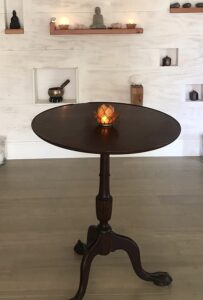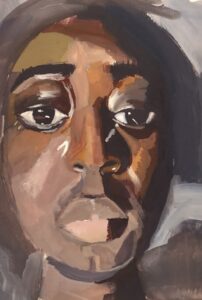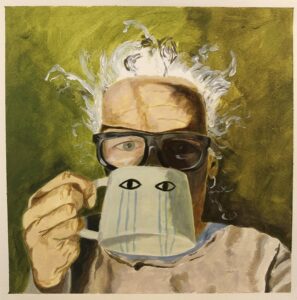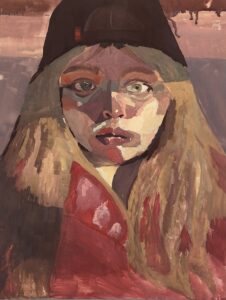Bringing ‘Gravel and Molasses’ to the Coffeehouse
Musician and songwriter Chris Smither’s distinctive sound, honed over the course of more than 50 years, draws inspiration from the blues, American folk music, and modern poets and philosophers. Smither will perform his original music at First Encounter Coffeehouse (220 Samoset Road, Eastham) on Saturday, March 23 at 7:30 p.m.

Smither’s artistry on the guitar — marked by percussive strumming, virtuosic but unhurried fingerpicking, and an ability to allow melodic lines to weave in and out of a wider swath of sound — contrasts with his gravelly voice, which sometimes floats gently above the music and other times grinds along, coarse and deep. (Smither cites one critic who described his voice as “equal parts gravel and molasses.”) In all his songs, Smither’s vocal delivery tells a story in smooth conversation with the instrumental lines.
Smither’s extensive catalogue of albums tells his story as a musician, from his early years in New Orleans through half a century of performances in venues all over the world. His 20th album, All About the Bones, will be released on May 3. It features eight new songs, as well as covers of Eliza Gilkyson’s “Calm Before the Storm” and Tom Petty’s “Time to Move On.”
Tickets are $35 at firstencounter.org. —Eve Samaha
Conversations Over the Beyond

Since she was very young, Susan Ahearn says, she has been able to see “transparent people” — the term she uses to describe the spirits of the dead. This connection to the spirit world, she maintains, has deepened over time with five near-death experiences.
“Each time I have died, I have come back with a new or stronger gift,” she says. “I see, hear, feel, sense, and taste messages.”
Ahearn, who calls herself the Cape Cod Happy Medium, will conduct a table-tipping séance at an undisclosed private residence in Wellfleet on Tuesday, March 26 at 7 p.m. The session, she says, is intended to connect participants with their own “transparent people” in order “to bring helpful messages and reveal what one otherwise couldn’t know.” Participation in the séance costs $100.
Table tipping, which Ahearn says she learned about a decade ago, is one of the practices that she claims to use to communicate with loved ones, spirit guides, and even pets that have died. “It’s an old form of physical mediumship,” she says. “Back in Victorian days, they used to call it a parlor trick.” (In addition to table tipping, Ahearn also conducts psychic and tea leaf readings and ghost investigations.)

To begin the table tipping, Ahearn and participants gently place their hands on the surface of the table. After asking a series of simple questions, they wait for spirits to respond and make themselves known.
“You can feel the energy shift within the table,” she says. “The table will start to swirl in one direction or another — sometimes it’s lifted up completely or turned over at other times. It just depends on the participants.”
While table tipping has been practiced since Victorian times, it has also been debunked by skeptics. Others consider it a source of entertainment or self-reflection, similar to astrology or the use of tarot cards.
For more on Ahearn, see capecodhappymedium.com. —Aden Choate
Looking at ‘The Primary Self’ at Wellfleet Public Library
Currently on view at the Wellfleet Public Library (55 West Main St.), “The Primary Self” features self-portraits by students of artist Amy Kandall. The journey of making art — rather than showcasing refined finished objects — is the emphasis here. But plenty of gems emerge from the studious experimentation on display.

Kandall’s students at Nauset Regional High School and Truro Center for the Arts at Castle Hill
are represented by paintings that explore a range of concerns, from color value to temperature. Tianna Rodney’s self-portrait shows careful observations of subtle shifts in value and abstracts the face through close cropping and an emphasis on the geometric shapes of light and shadow.

In her self-portrait, Lily Cianfaglione experiments with just two complementary colors: purple and yellow. Warm yellows describe the light hitting her nose, and dark purples are used for the intense shadows. But the most intriguing colors in this painting — and throughout the exhibition in general — are the in-between colors, the muddy and unnamable tones that embody a complex range of temperatures. “We’re just stepping out of black-and-white painting and thinking about how values can incorporate heat and coolness,” says Kandall.
The close analysis required for the project turns the self into an armature for visual exploration. “Your body is your best tool,” says Kandall, quoting Harry Holl, one of her teachers. Consequently, these self-portraits are straightforward, with little posing and primping, unlike the way young people typically present themselves in contemporary selfie culture. The exceptions come from some of Kandall’s older students. Karen Miller explores some of the same formal concerns as the younger artists but incorporates humor into her portrait. “My adults were capable of thinking about imagery in a more sophisticated way,” says Kandall. “Miller is a practiced artist in other materials and understands irony, play acting, and catching quirky moments.”

The exhibition also includes a series of Kandall’s own ceramic sculptures in which the mode of self-portraiture is taken into more symbolic and allegorical territory. Titled Hibernation, this group of objects shows the artist interacting with a bear in situations that could be either cozy or threatening — or both.
Viewed together, the works in the show speak about art making as a physical process through which an understanding of the self gradually and organically arises. Rodney, who is a senior at Nauset, is at the beginning of her journey as an artist. “At first it was really difficult to draw a basic shape and understand color value,” she says. But her recent work shows a solid grasp of these issues. And she’s starting to learn something about herself in the process. “It’s not exactly like me,” she says of her self-portrait, “but it’s the essence of me.”
An Operatic Retelling of a Classic Love Story
A live simulcast of the Metropolitan Opera’s new production of Charles Gounod’s Romeo et Juliette will be shown at Wellfleet Harbor Actors Theater (2357 Route 6) on Saturday, March 23, at 12:55 p.m. The simulcast is the seventh of nine in the Met’s Live in HD 2023-24 season.

The five-act opera, which has a French libretto by Jules Barbier and Michel Carré, premiered in 1867 at the Théâtre Lyrique in Paris. It was, of course, based on William Shakespeare’s classic tragedy. But according to the Met’s production notes, Gounod changed the story to focus more on the central characters of Romeo and Juliette, reducing supporting characters like Montague and Paris. The change was likely due to Gounod’s recognition of his own compositional strengths: as the notes explain, the opera is “an excellent example of French Romanticism, a tradition that values subtlety, sensuality, and graceful vocal delivery over showy effects” — which certainly seems more suited for lovers’ duets than violent feuds.
The Met’s production features soprano Nadine Sierra as Juliette, tenor Benjamin Bernheim as Romeo, baritone Will Liverman and tenor Frederick Ballentine as the rivals Mercutio and Tybalt, mezzo-soprano Samantha Hankey as the pageboy Stéphano, and bass-baritone Alfred Walker as Frère Laurent. The Met’s Music Director Yannick Nézet-Séguin will conduct.
Tickets are $17.50 to $29.50 including fees at what.org. —Eve Samaha



